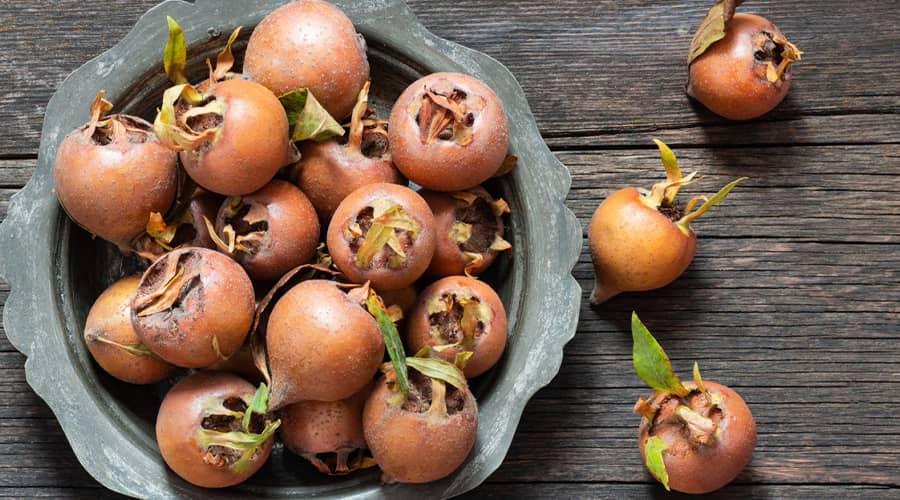
Medlar is a really useful herb, as it has a lot of beneficial effects, which we will now learn more about.
The popular name for the Medlar:
Mespilus germanica, common medlar
Description of the medlar:
The fruit usually grows 4-6 metres tall but in rare cases it can grow up to 10 metres. It is a deciduous small tree or branched shrub. The bark is initially smooth, greyish brown, later becoming deeply fissured and flaking off in angular pieces. Red or yellow patches remain where the bark has separated. Its shoots are initially covered with dense white hairs, which later develop thorns.
Flowers open in May.
Sometimes solitary, sometimes in pairs on short stalks, interspersed with 5 white petals and surrounding young leaves. It has many stamens. Self-fertile. The 2-3 cm long fruit develops from the scales. The fruit is pale brownish green. It later turns brown and is softened by a hard frost. As it is a heat-demanding plant, it is no longer found north of Hungary.
Use of medlar:
Fruits that can only be enjoyed after the first frosts or after a longer storage period used to be very popular. The fruits were used to ferment wine, but they also played an important role as a medicine for treating internal bleeding and intestinal disorders. Its preparations were used to treat inflammations of the oral cavity and pharynx.
Its vitamin-rich fruit is made into preserves, but it is also eaten raw.
Preparations made from the fruit and leaves of the medlar tree can be used to reduce inflammation of the oral cavity and pharynx. It has also been used in the treatment of intestinal diseases. A decoction of the bark of the naspolya tree has been used in folk medicine to soothe bleeding.
Benefits of Medlar
High in fibre: the fruit is an excellent source of fibre, which plays an important role in digestive health. Fiber can help prevent constipation and supports bowel movements.
High in vitamin C: Vitamin C is a powerful antioxidant that helps protect cells against harmful free radicals and supports the immune system.
Phytochemicals: medlar contains a number of phytochemicals, such as polyphenols, which have anti-inflammatory properties and may contribute to the maintenance of a healthy cardiovascular system.
Minerals: medlar is a good source of various minerals, such as potassium, which plays an important role in regulating nerve and muscle function.
Effects on heart health: regular consumption of medlar may help to maintain cardiovascular health, for example by reducing high blood pressure and cholesterol levels.
Active ingredients of Medlar:
Substitutes.
How to collect the herb medlar?
The fruit of the medlar is extremely rich in vitamins. Its peculiarly shaped fruit is post-ripe, meaning it ripens when picked from the tree. It is a late fruit, i.e. it ripens in late autumn and is harvested in October or early November. The fruit has a distinctive sweet, pleasant, slightly tart flavour, with a light brown flesh that is malleable like a ripe pear.
Which is the best variety of medlar?
Choosing the best variety of medlar depends on the climate of the area, growing conditions and individual tastes. It is worth trying several varieties to find the one that suits you best.



